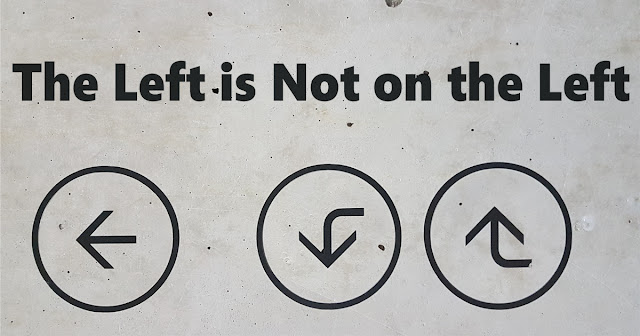The Left is Not on the Left.
I’ve long recognized that what we term the left is not, in fact, on the left of anything, but on the periphery of whatever shape socio-politico-cultural whazzits occupies.
What Zero shows (in this thread) is something of the “why” the Left is (pardon me) centered on the margin. (The geography of this space is perplexing.) There is a tactical component I had not appreciated. The margin is both confusing and confused.
The margin is paradoxical. It is comprised of the highly unique cases that defy conventional categorization. They don’t fit in. That’s hell for social creatures. They long for a category. Easy marks for any ideology just looking for members.
Now, every ideology thinks it’s the best ideology and should therefore displace all other ideologies. That is, every ideology thinks it should be at the center. The problem for ideologies that suck is that they can’t recruit.
Crap ideologies then must recruit from the margins and find ways of expanding the margins, that is, getting more people to think of themselves as marginal (victims). So, what happens when an ideology relies on pulling members from the margins?
Well, even if it doesn’t start out that way, any ideology collecting members among the outcasts is going to necessarily become collectivist because the outcasts long to shed their uniqueness, because uniqueness is an albatross to them.
And, if such an ideology does achieve its central ambitions in such a manner, you ultimately get what Bill Yeats and his buddy Rudyard describe.
Anon asks: “Can there even be a "center" if the Overton Window never stops moving due to that Progressive margin's momentum?”
There is a center in the sense that societies can find balance and historically do at times. The nature of balance is that it can be lost. What occupies the center that provides balance may not be just one thing. But perhaps there is something which provides perfect balance.
I should emphasize that the center, in this space, is not the midpoint between left and right anymore. Certainly, it represents balance, but it is also in a way disputed territory. If the wrong ideology takes center, balance may either be thrown or the structure becomes rigid.
As an illustration, consider an acrobat balancing on a ball. Both the acrobat and the ball must move to maintain balance. To much chaos, and both acrobat and ball go careening. Too much rigidity and they both collapse.
Gitabushi adds: “Too low standards of tolerance, and nothing fits together anymore. Too high standards of tolerance, you end up rejecting a bunch that is clearly good enough.”


Comments
Post a Comment